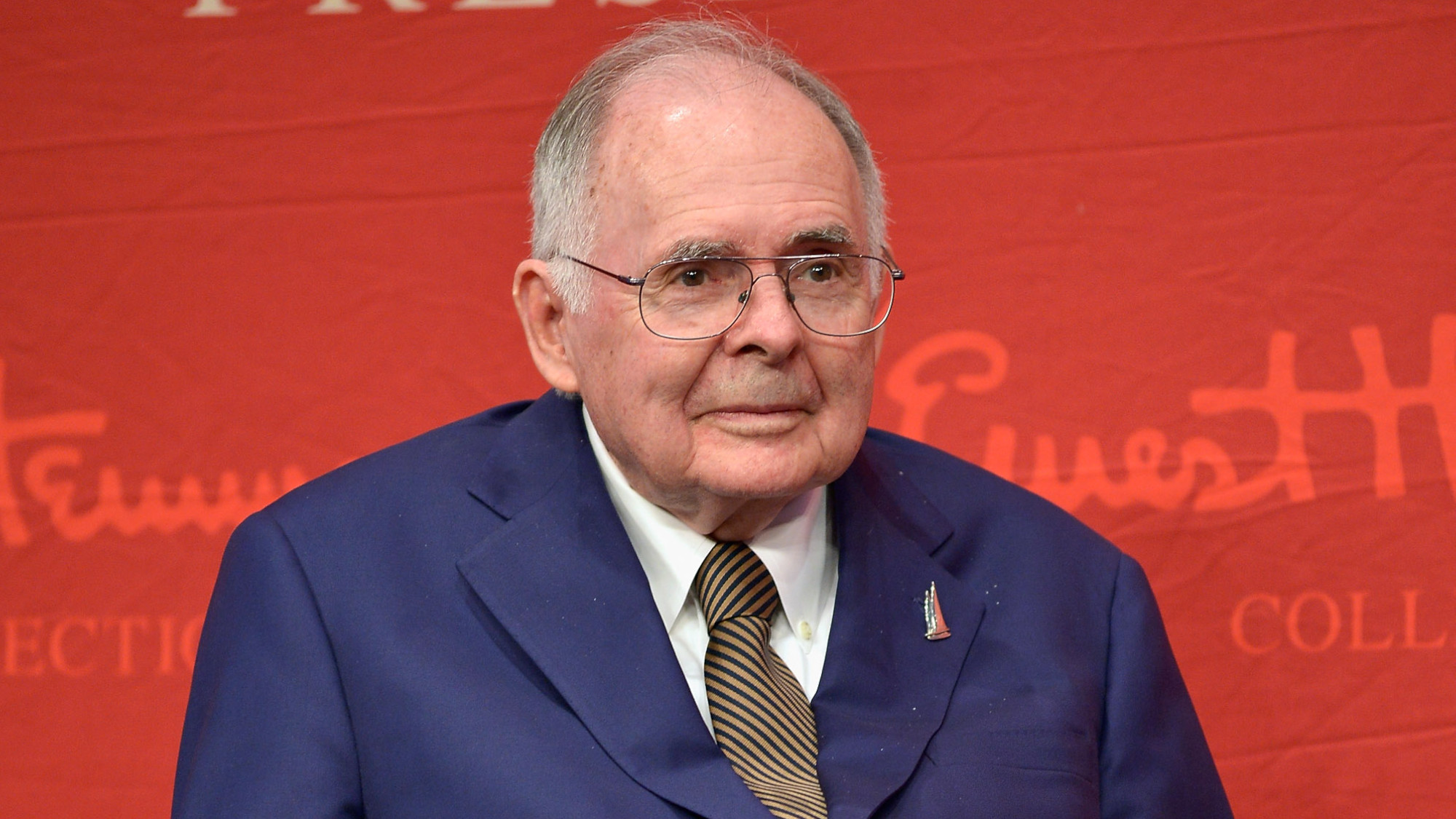Robert Giroux
The highbrow publisher who enriched the literary landscape
Robert Giroux
1914-2008
Robert Giroux, who has died at 94, published some of the 20th century’s foremost authors, among them Isaac Bashevis Singer, Aleksandr Solzhenitsyn, William Styron, Nadine Gordimer, and Elizabeth Bishop. First at Harcourt Brace, and then at his namesake firm of Farrar, Straus & Giroux, he valued literary excellence over the bottom line. “What’s publishing all about?” he once asked. “If it isn’t about what you like and believe in, you might as well manufacture sausages.”
The Week
Escape your echo chamber. Get the facts behind the news, plus analysis from multiple perspectives.

Sign up for The Week's Free Newsletters
From our morning news briefing to a weekly Good News Newsletter, get the best of The Week delivered directly to your inbox.
From our morning news briefing to a weekly Good News Newsletter, get the best of The Week delivered directly to your inbox.
As a Columbia University undergraduate, said the London Times, Giroux edited the Columbia Review, a campus literary journal in which he published the work of his college friends Thomas Merton and John Berryman, both of whom he would publish as adults. Beginning as a junior editor at Harcourt in 1940, he edited such famous names as T.S. Eliot and Edmund Wilson. “He was excellent, too, at finding new authors of his own.” On a commuter train he became so engrossed in the manuscript of Jean Stafford’s first novel, Boston Adventure (1944), that he missed his stop. Stafford later introduced him to her husband, Robert Lowell. “Giroux thought his poems superb and published the collection Lord Weary’s Castle immediately. It won the 1947 Pulitzer Prize.” Giroux also published the first novels of Jack Kerouac (The Town and the City, 1952), Bernard Malamud (The Natural, 1952), and Flannery O’Connor (Wise Blood, 1952).
In 1955, “Giroux tired of the strictures at Harcourt and joined the informal but high-minded Farrar, Straus,” said The Washington Post. “At least 15 writers followed him to his new publisher.” Giroux reciprocated his writers’ devotion, often pulling them out of “drunken scrapes” and otherwise tending to them. “He visited Lowell in a padded cell at an asylum where not even Lowell’s mother could be admitted.” When he visited Ezra Pound, who had been institutionalized for years, the poet snarled, “What in hell are you doing here?” Giroux replied, “‘I have come to pay homage to a poet,’ prompting a deep bow from the irascible Pound.”
Despite Giroux’s usually unerring taste, said The New York Times, some major works eluded him. He enthusiastically recommended J.D. Salinger’s The Catcher in the Rye to his boss at Harcourt, Eugene Reynal, who didn’t understand it. “He said, ‘This is a book about a kid going to prep school,’” Giroux recalled. “So he sent it to the textbook people, who read it and said, ‘It’s not for us.’” Another time, Kerouac walked into Giroux’s office and unfurled a manuscript “written on sheets of onionskin and teletype paper pasted together and delivered in a roll about 120 feet long.” When Giroux suggested it needed editing, Kerouac called him a “crass idiot” and took it to Viking, which published it as On the Road
A free daily email with the biggest news stories of the day – and the best features from TheWeek.com
-
 Joanna Trollope: novelist who had a No. 1 bestseller with The Rector’s Wife
Joanna Trollope: novelist who had a No. 1 bestseller with The Rector’s WifeIn the Spotlight Trollope found fame with intelligent novels about the dramas and dilemmas of modern women
-
 Frank Gehry: the architect who made buildings flow like water
Frank Gehry: the architect who made buildings flow like waterFeature The revered building master died at the age of 96
-
 R&B singer D’Angelo
R&B singer D’AngeloFeature A reclusive visionary who transformed the genre
-
 Kiss guitarist Ace Frehley
Kiss guitarist Ace FrehleyFeature The rocker who shot fireworks from his guitar
-
 Robert Redford: the Hollywood icon who founded the Sundance Film Festival
Robert Redford: the Hollywood icon who founded the Sundance Film FestivalFeature Redford’s most lasting influence may have been as the man who ‘invigorated American independent cinema’ through Sundance
-
 Patrick Hemingway: The Hemingway son who tended to his father’s legacy
Patrick Hemingway: The Hemingway son who tended to his father’s legacyFeature He was comfortable in the shadow of his famous father, Ernest Hemingway
-
 Giorgio Armani obituary: designer revolutionised the business of fashion
Giorgio Armani obituary: designer revolutionised the business of fashionIn the Spotlight ‘King Giorgio’ came from humble beginnings to become a titan of the fashion industry and redefine 20th-century clothing
-
 Ozzy Osbourne obituary: heavy metal wildman and lovable reality TV dad
Ozzy Osbourne obituary: heavy metal wildman and lovable reality TV dadIn the Spotlight For Osbourne, metal was 'not the music of hell but rather the music of Earth, not a fantasy but a survival guide'

